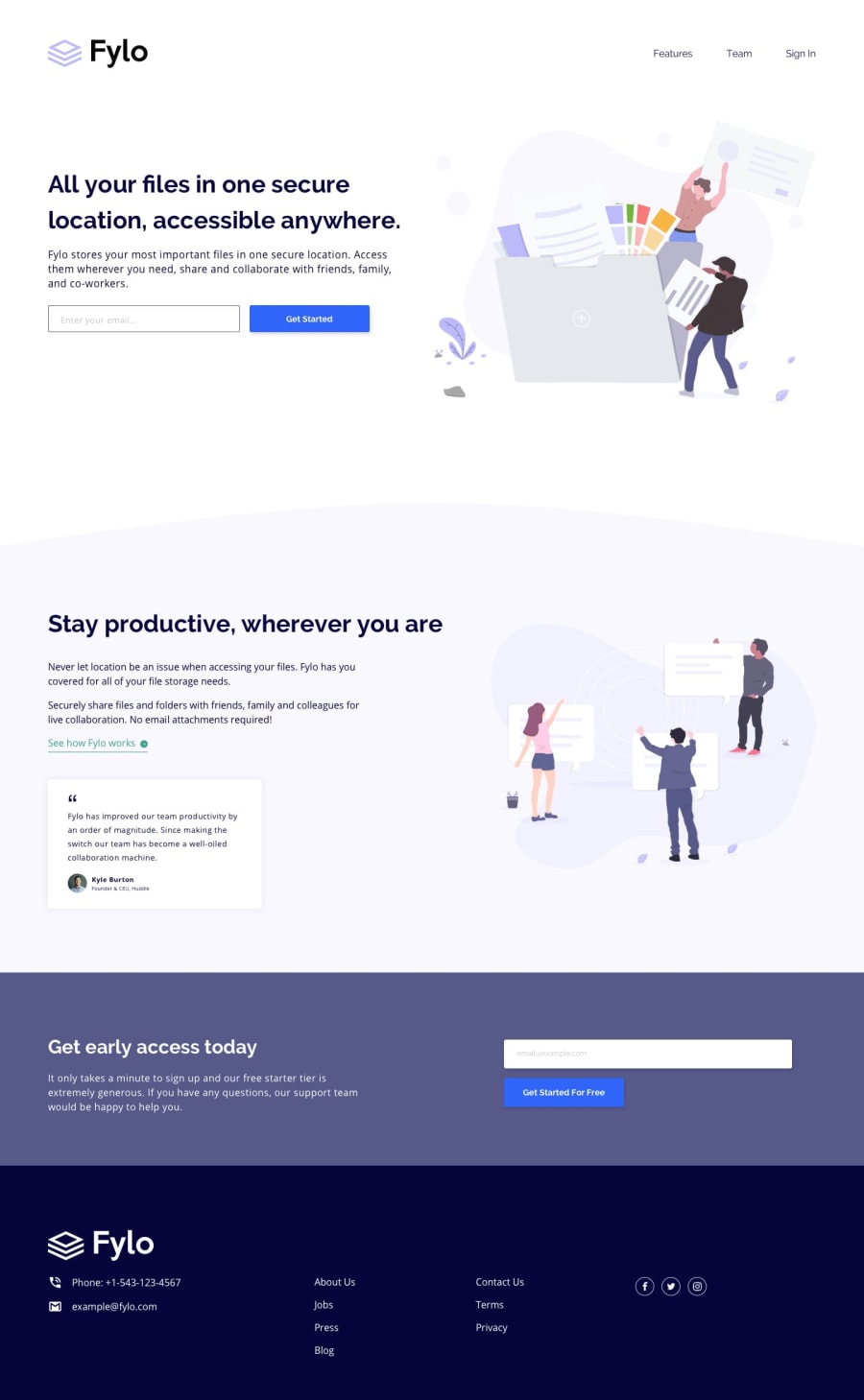
fylo landing page with two column layout using CSS flex
Design comparison
Solution retrospective
I am proud of my growth and improvement. The learning process in building this is something I appreciate. Next time I would build with best practices in mind. Because I got to know from working on this project that there is more than one way to do something, but the best way is what I should seek out
What challenges did you encounter, and how did you overcome them?I particularly had issues understanding media queries and how they play into a web page's responsiveness. I overcame it by reaching out to other developers in my boot camp for help. There was always someone to explain what could work and what was wrong. By the time I completed this project, I had an above-average understanding of media queries and the way it works.
What specific areas of your project would you like help with?-
When to use width and when to use max-width? What is the major difference? The explanations online are not helping.
-
Is the use of 'em' as a font size unit very important in responsive designs?
Community feedback
- @kodan96Posted 6 months ago
hi there! 👋👋
You should avoid hard-coded values (pixels) most of the time. When you use these values you give up responsiveness(or you make it harder for yourself at least)..
Typically you will increase the font-size property with
@mediaqueries. If you have hard-coded values all over your CSS, you need to modify every element'sfont-size. On the other hand, if you userem-s all you need to do is changing thefont-sizein your CSS:rootselector and all your elements will have a new size based on that value.I usually use
emforpadding and marginfor text-based elements, since their margin usually based on theirfont-size, and again, when you change the font-size in:rootthese values will scale up as well without you touching them, making your job easier and your page maintainable.If you are not familiar with the
:rootselector it's usually used to set custom properties(others call them CSS variables ) that you can apply later.When you apply
widthwith pixels you will have a fixed-width element, which also not the best for responsiveness. If you applywidthwith relative units (like %, vh, vw, ch and a bunch of others) your element will be responsive and will change its width based on viewport size. If you combine this withmax-widthyou insure that your element won't extend above a certain value:.element-classname { width: 90%; max-width: 60ch; }in this example the element will take up 90% of the viewport until that value is less than
60ch, when the element's width reaches this value it won't extend anymore, but it will shrink back down when the viewport size gets small enough.Hope this helped 🙏
Good luck and happy coding! 💪
Marked as helpful1@funmeelayoPosted 6 months ago@kodan96 Thank you. Your explanation helped a lot.
1
Please log in to post a comment
Log in with GitHubJoin our Discord community
Join thousands of Frontend Mentor community members taking the challenges, sharing resources, helping each other, and chatting about all things front-end!
Join our Discord
